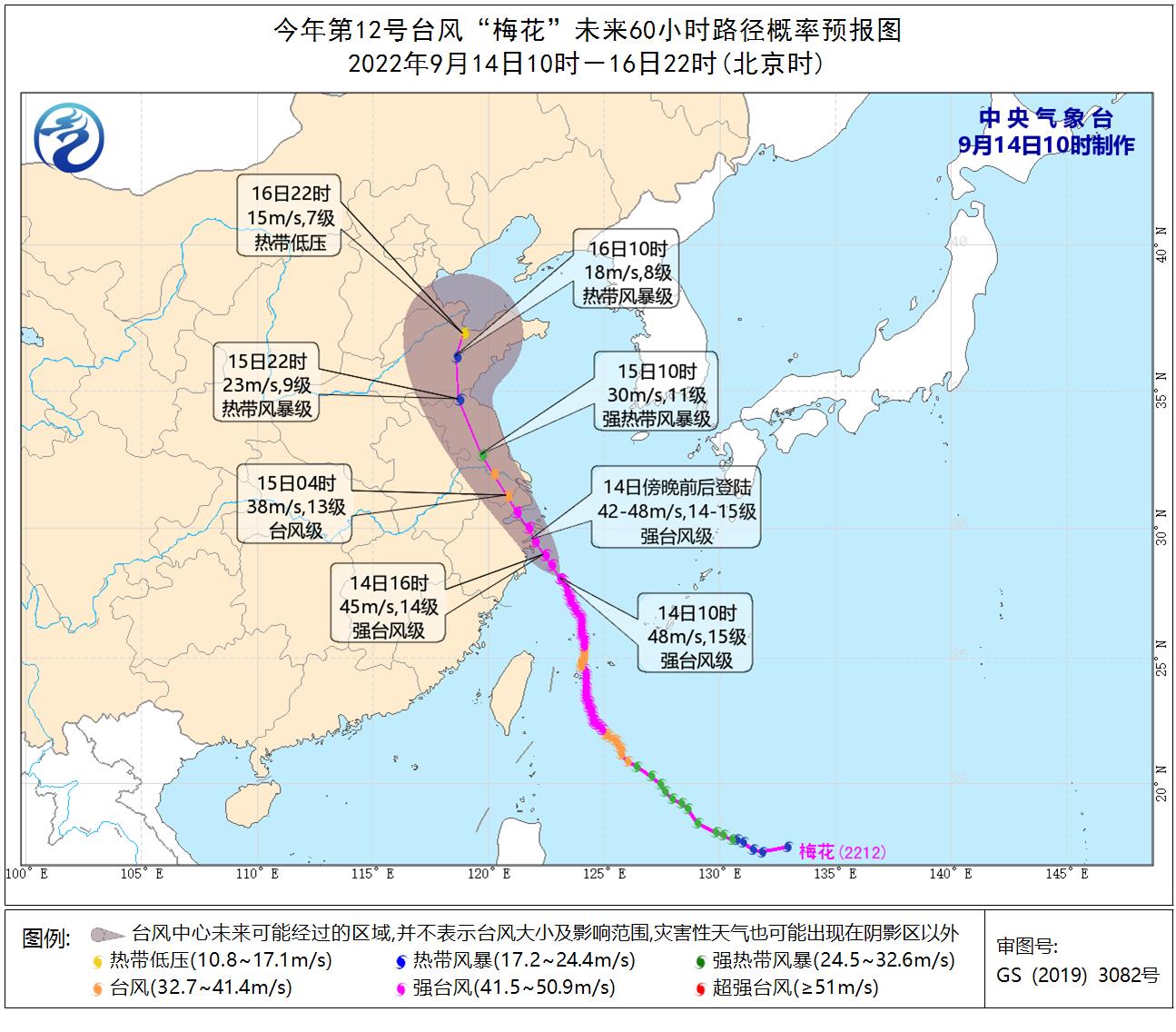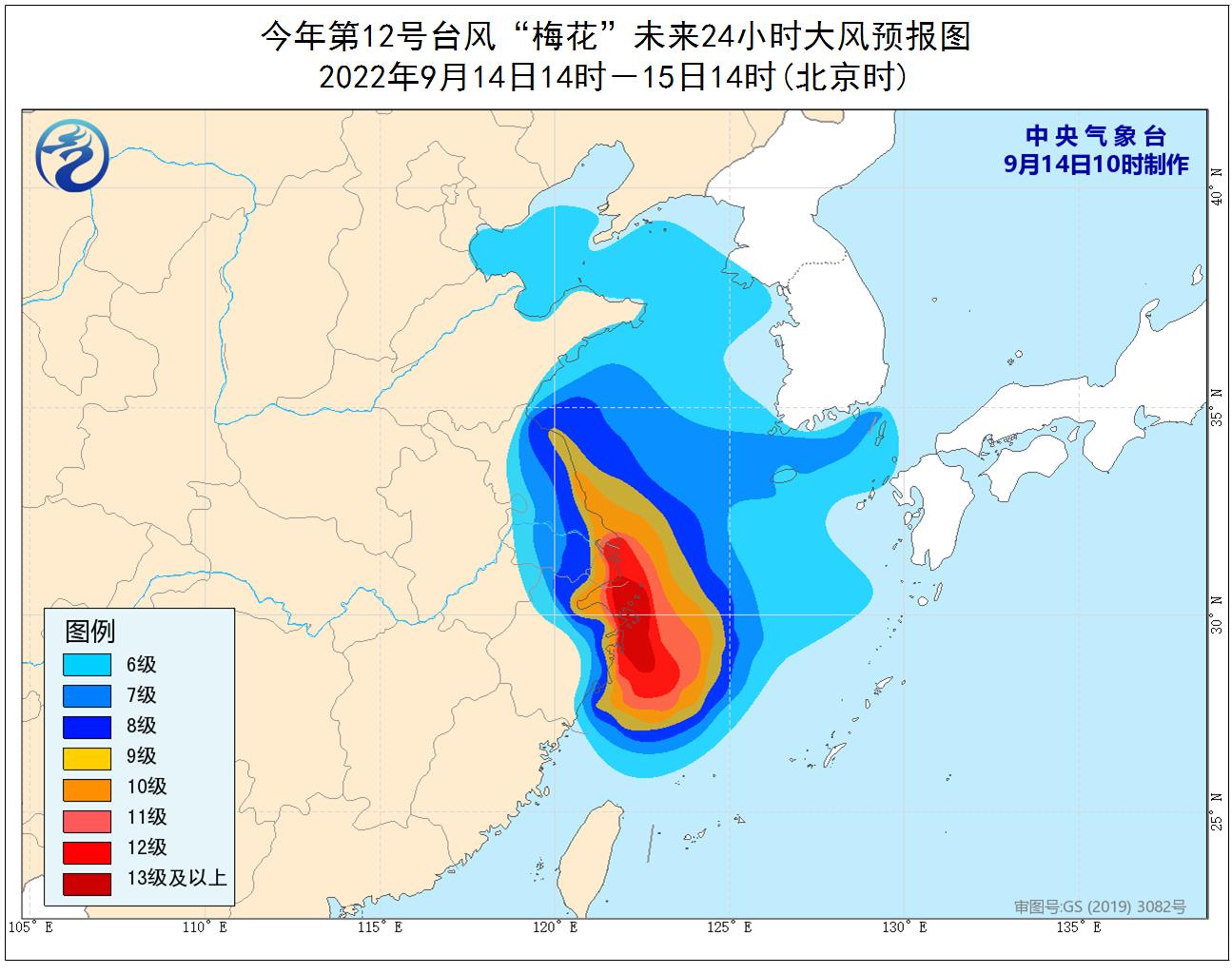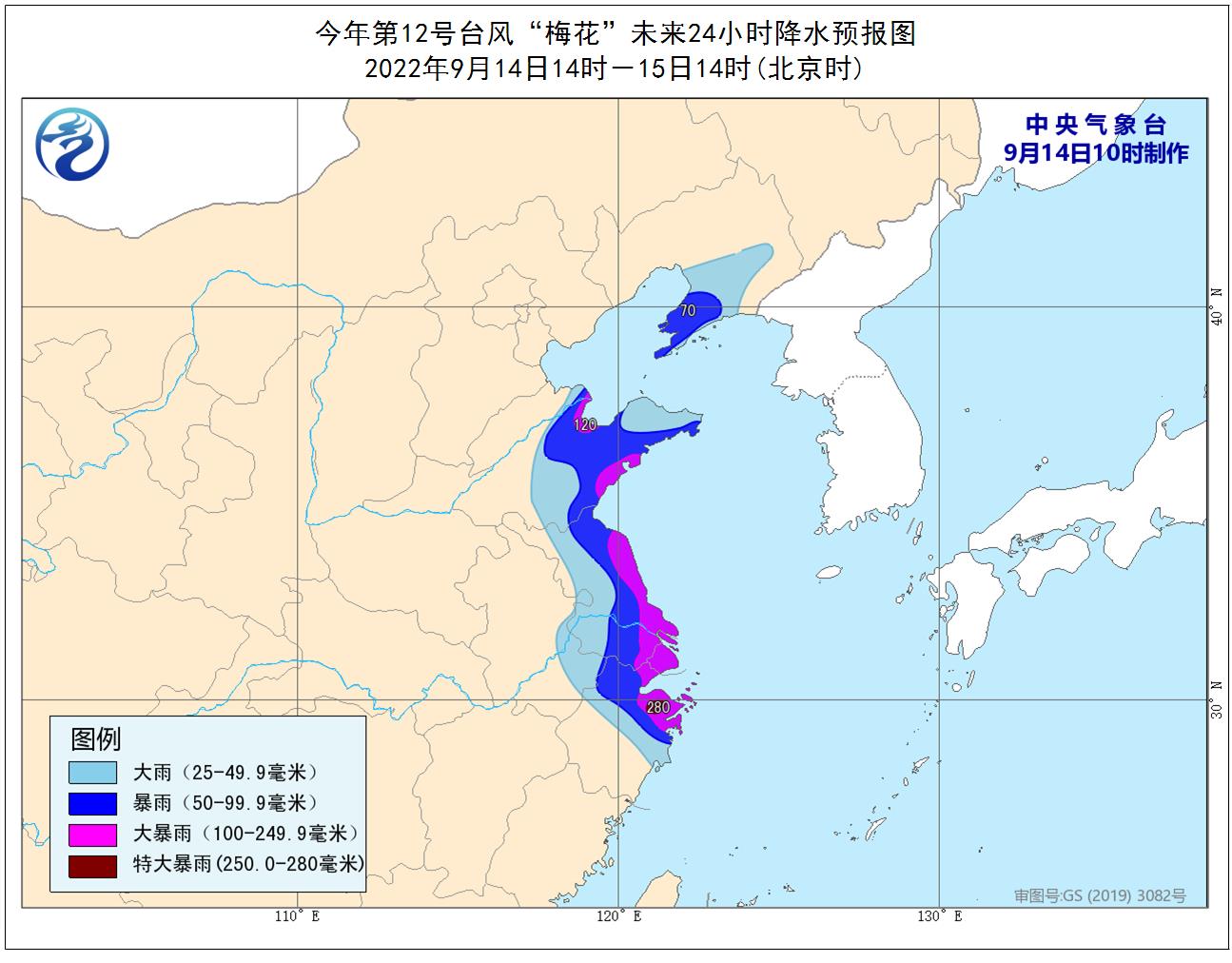The Central Meteorological Observatory issued a typhoon red warning at 10: 00 on September 14th.
The Central Meteorological Observatory issued a typhoon red warning at 10: 00 on September 14th:
The center of the 12th typhoon "Meihua" this year (strong typhoon level) is located at 10 o’clock this morning (14th) in the southern part of the East China Sea, about 185km southeast of Xiangshan County, Zhejiang Province, which is 28.1 degrees north latitude and 123.1 degrees east longitude. The maximum wind force near the center is 15 (48m/s), the lowest pressure in the center is 945 hectopascals, and the radius of the seven-level wind circle is 240-3000.
It is estimated that "Meihua" will move to the northwest at a speed of 20-25 kilometers per hour, and its intensity will be maintained or slightly enhanced. It will land in the coastal area from Sanmen to Zhoushan in Zhejiang around the evening of the 14th (strong typhoon level, 42-48 m/s, 14-15); After landing, "Meihua" will continue to move to the northwest, with reduced intensity, passing through Hangzhou Bay, and will land again on the coast from Jiaxing, Zhejiang to Pudong, Shanghai this evening (typhoon level, 35-40m/s, 12-13).
Gale forecast: From 14: 00 on September 14th to 14: 00 on 15th, there will be 6-8 gale in most parts of the East China Sea, most parts of the Yellow Sea, Bohai Sea, Bohai Strait, Changjiang Estuary, Hangzhou Bay, northern Fujian coast, Shandong coast, eastern Zhejiang, Shanghai and eastern Jiangsu, with gusts of 9-11, including the central and western East China Sea, Hangzhou Bay, Changjiang Estuary, central and northern Zhejiang coast, Shanghai coast and eastern Jiangsu. ?
Precipitation forecast: From 14: 00 on September 14th to 14: 00 on September 15th, there will be heavy rains in Liaodong Peninsula, central and eastern Shandong, eastern Anhui, Jiangsu, Shanghai and central and northern Zhejiang, among which, there will be heavy rains in parts of the southern coast of Shandong Peninsula, eastern Jiangsu, Shanghai and northeastern Zhejiang, and heavy rains (250-280mm) in the northeastern Zhejiang.
Defense guide:
1. Relevant departments shall, in accordance with their responsibilities, do a good job in typhoon prevention and emergency rescue.
2. Water operations and passing ships in relevant waters should return to Hong Kong to take shelter from the wind, strengthen port facilities, and prevent ships from anchoring, grounding and collision.
3. Stop large-scale indoor and outdoor gatherings and dangerous outdoor operations such as high altitude.
4. Reinforce or dismantle structures that are easy to be blown by the wind. Personnel should not go out at will. They should stay in windproof and safe places as far as possible, so as to ensure that the elderly and children stay in the safest place at home, and the dangerous people will be transferred in time. When the typhoon center passes by, the wind will decrease or stay still for a period of time. Remember that the strong wind will suddenly blow, and you should continue to stay in a safe place to avoid the wind, and the dangerous people will be transferred in time.
5. Relevant areas should pay attention to prevent flash floods and geological disasters that may be caused by heavy precipitation.



(Editor: Zhang Lin)